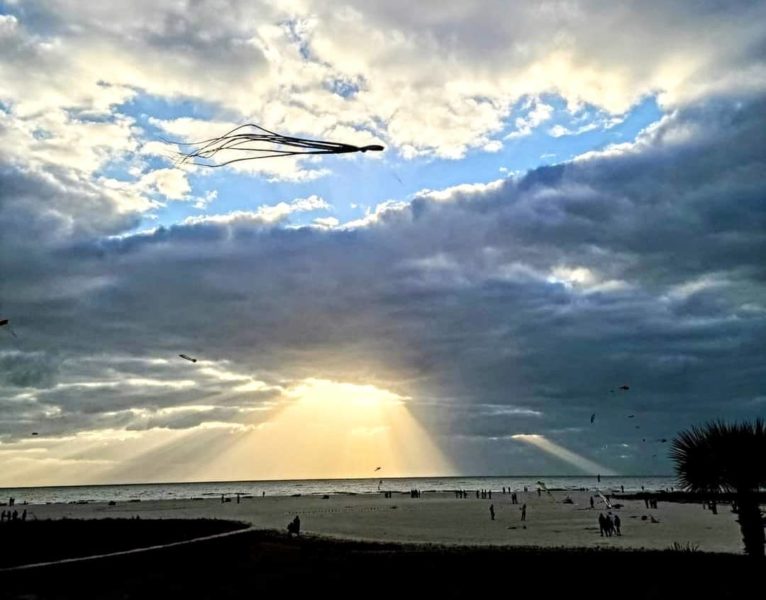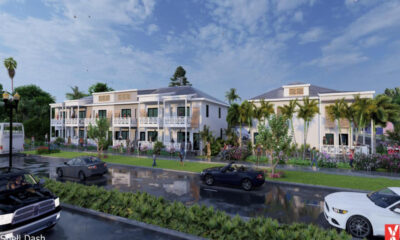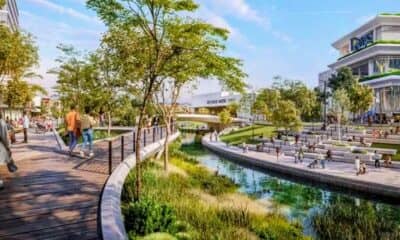Thrive
Beach mayors meet to talk issues and concerns

Mayors of the area’s coastal communities must walk a tight rope between ensuring a high quality of life for their constituents, providing a national destination for tourists and balancing growth – all while preparing for the effects of changing climate.
Seven local beach mayors dove into those topics and more during a town hall meeting Thursday night. Titled “State of the Beaches,” St. Petersburg College’s Institute for Strategic Policy Solutions presented the forum at Madeira Beach City Hall. Moderated by former news anchor Al Ruechel and co-hosted by the Treasure Island and Madeira Beach Chamber of Commerce, the town hall provided the public with a rare glimpse of what it takes to keep Pinellas County’s perennially top-ranked beaches thriving.
Joining Ruechel on the dais were Mayor Alan Johnson of St. Pete Beach, Mayor Samuel Henderson of Gulfport, Mayor John Hendricks of Madeira Beach, Mayor Tyler Payne of Treasure Island, Mayor David Will of Redington Beach, Mayor Bill Queen of North Redington Beach and Mayor MaryBeth Henderson of Redington Shores. The discussion started with the respective mayors’ most pressing concerns for their communities, a recurring theme throughout the night.
Hendricks began with something he said affects every beach town along Gulf Boulevard – traffic.
“That’s one I don’t know how we’re going to deal with, frankly,” he said. “I will say to some people that have moved here expecting not to have any traffic; you probably moved to the wrong area.”
Hendricks added that managing growth is another concern and sought to dispel rumors that city officials welcome hotels and condos reaching 10-12 stories in Madeira Beach. He said that is not true, and the maximum height is 34 feet.
Johnson said St. Pete Beach encounters different problems than other coastal communities due to its size. With around 10,000 permanent residents, St. Pete Beach is larger than its counterparts. At any point, Johnson said another 10,000 snowbirds and 30,000 tourists could occupy the city. That causes its population to vary from 10,000 to 50,000 – depending on the day of the week and time of the year.

St. Pete Beach Mayor Alan Johnson, right, said his city is “going to need a lot of help” addressing sea-level rise. Redington Beach Mayor David Will listens to his right. Screengrab.
Johnson noted city officials have recently spent a lot of time and money shoring up the city’s infrastructure, such as its roads and sewer systems. What worries him the most, however, are things he said are out of his control – like sea-level rise and climate change. He employs four consultants that focus on different areas and meet once a month to determine the best paths forward, and officials use that data to formulate St. Pete Beach’s 2050 plan.
“But the sea level rise issue is way beyond our ability from our financial standpoint,” said Johnson. “So, we’re going to need a lot of help.”
Henderson noted Gulfport was a different community compared to others on the panel. The city of 12,500 sits on Boca Ciega Bay rather than the Gulf of Mexico, and he said tourists come to experience its “old-Florida charm” rather than its beaches. Despite its differences, Henderson said his biggest concerns were the same as the rest of the panel’s – managing growth and environmental stewardship.
Pinellas is Florida’s most densely populated county, with 24 municipalities packed into a relatively small peninsula. Henderson called that “a lot of urbanization and a lot of impact on a coastal environment.”
“I think one thing we’d all agree on up here is that once you’re not talking about Disney and the theme park set, Florida’s wealth is in its waters,” he said. “Those are things we have to take care of in order to be that place that people want to see.”
That was not the only thing the seven mayors agreed upon.
When Ruechel asked the panel how they felt about the 2022 State Legislative Session, the seven mayors were enthusiastic and unanimous in their disdain for what they feel is an attack on “home rule.” Essentially, home rule allows local governments to make what they feel are the best decisions for their communities, rather than state lawmakers.
MaryBeth Henderson said her takeaway from the session was 100%, definitely the erosion of home rule. She stressed that people closest to the community should decide what’s best for their residents. “The people in Tallahassee have no idea what’s going on in Redington Shores,” she said.
Payne echoed his colleagues’ sentiments on communities losing power to govern their people. Through his trips to Tallahassee, he found certain cities throughout the state were to blame due to passing ordinances the state felt it needed to override. He said communities in Pinellas suffer the consequences of decisions made in places like South Florida.
Payne did note one local legislative victory, legislation aiding the ability of coastal towns to remove the increasing number of derelict vessels polluting the waterways. He said Treasure Island was fortunate not to have as many as other areas, but he realizes it is a significant problem for his colleagues.
“Our Sheriff acted very quickly, and along with Representative (Linda) Chaney, they were able to clean up over 30 derelict vessels from around the county,” said Payne. “So, I consider that a big win for us.”

Mayors from all seven coastal communities noted the difficulty of raising the revenue needed to address problems while managing growth and maintaining low tax rates. Pictured: St. Pete Beach. Photo by Mark Parker.
Ruechel asked the panel how they balance growth while raising the revenue needed to prepare for the future, especially amid universal concerns regarding sea-level rise. Payne said tax rates along the area’s beaches are all significantly lower than St. Petersburg’s, and officials need to keep an open mind towards development to increase the tax base.
Hendricks called that balancing act a significant challenge for Madeira Beach. He said the city’s millage rate, at 2.75%, is the third-lowest in the county. However, he said more revenue is needed and noted a $13 million road and sewer project last year.
He added that no one, himself included, likes to see their taxes raised. However, he said many residents also fight the economic development needed to address current and future problems.
“And that’s what a lot of people don’t understand,” said Hendricks. “They moved to paradise and sort of expect us to raise the drawbridge and not let anyone else in.
“But it doesn’t work that way.”







